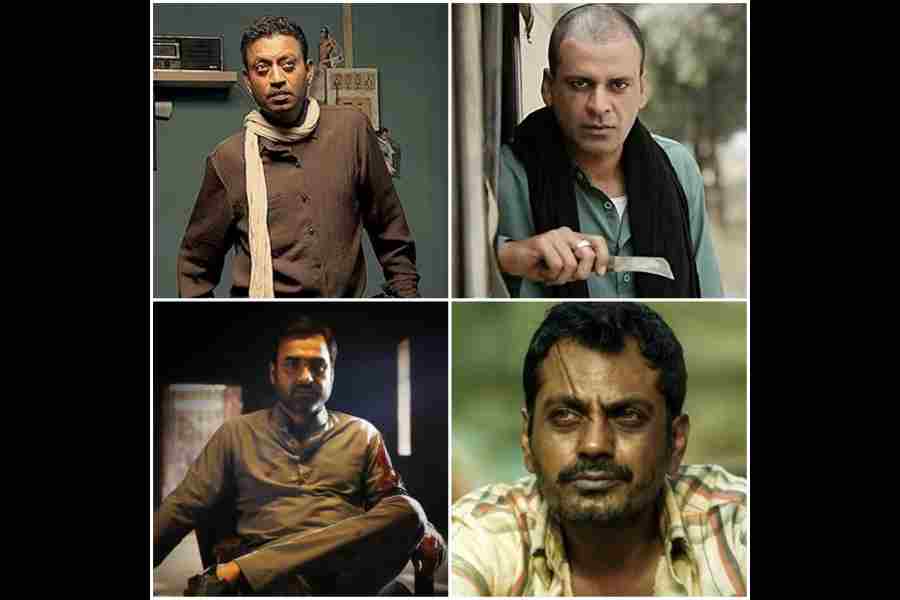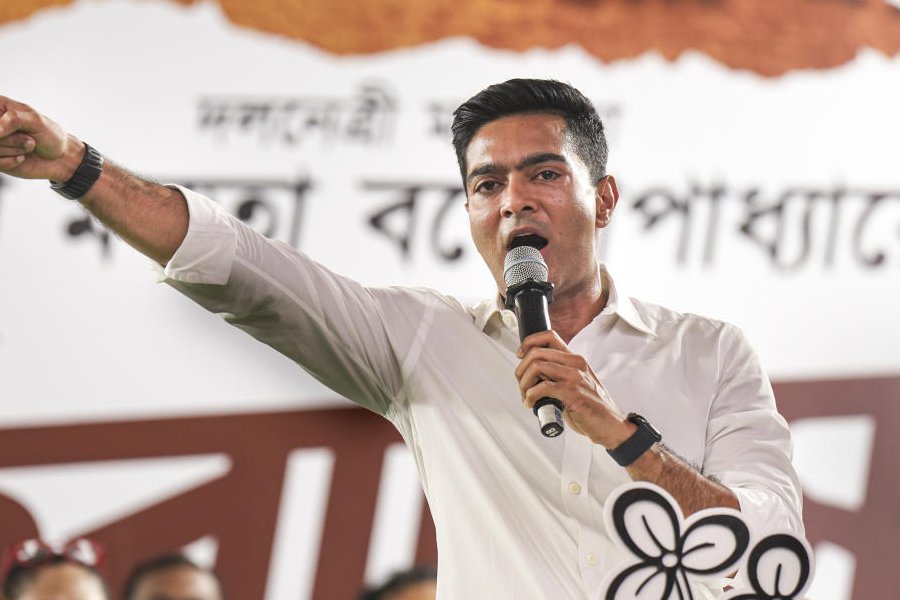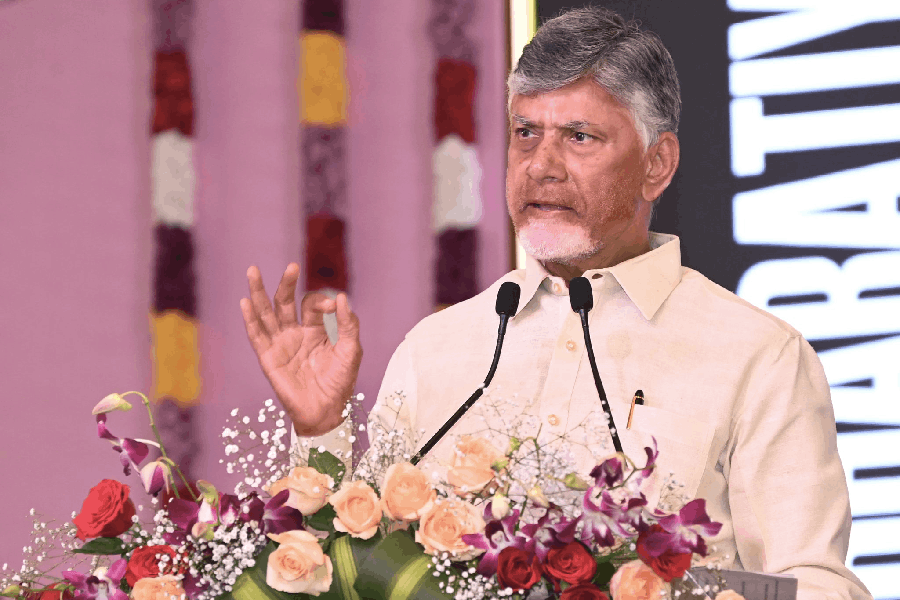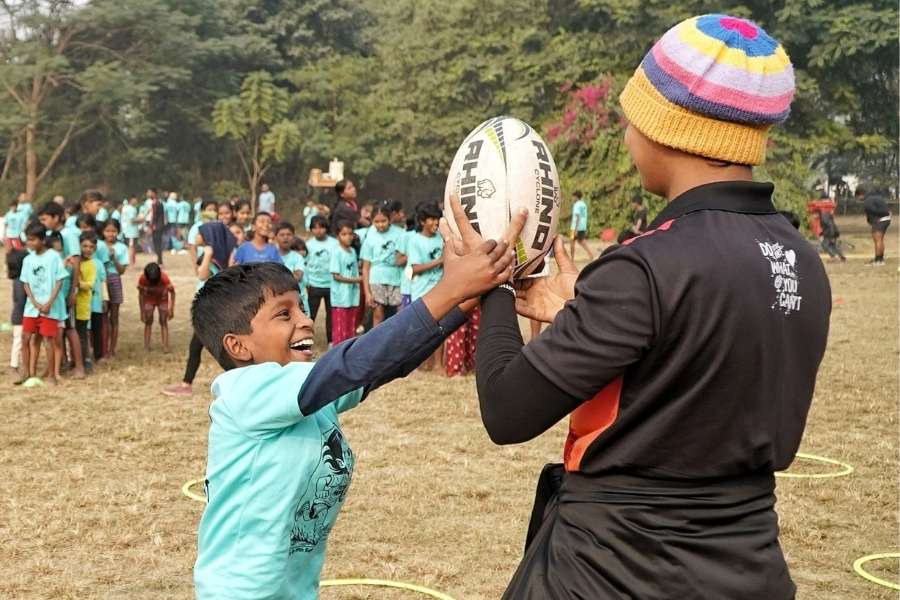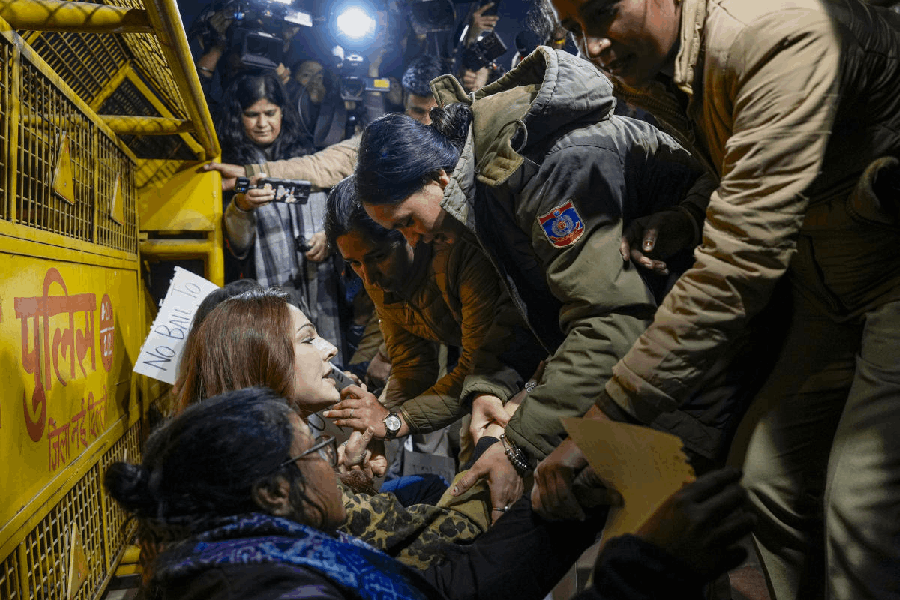“Ei shob jaigaye aashley ayu berey jaaye” (A visit to a place like this increases one’s life expectancy). This single-sentence recommendation should suffice in a tourism department brochure. Except what follows it is this: “Sabhyatar sathey shob jogajog shesh.” This end of contact with ‘civilisation’, invoked from time to time, as in Priyanka Chopra’s tweet about returning from Kashmir to ‘civilisation’ a few years ago, is usually a fourth-wall kind of statement that unnerves provincials who have found themselves caught between the nerves of exaggeration and diminishment. These lines occur in Satyajit Ray’s film, Aranyer Din Ratri — a group of young men from Calcutta, possessed by the tune of a holiday, drive to Palamau to experience life ‘outside civilisation’. The references are set quite early: Rabi Ghosh is seen reading Sanjibchandra Chattopadhyay’s Palamau, now categorised as a classic of 19th-century, Bengali travel writing; the book is thrown out of the car window by his friend. Whether we are being prepared for a reinforcement or the dismantling of the frames of Sanjib Chattopadhyay’s book, its unverifiable claims of authentic portrayal of life in the Chota Nagpur plateau, we don’t yet know.
Not far from Palamau, in McCluskieganj, set around the same time — Aranyer Din Ratri released in 1970; A Death in the Gunj is set in 1979 — a car declares the temporary ambition to live outside the city and routine. We don’t know the colour of the Ambassador in Ray’s black-and-white film, we surmise that it’s white; the car in Konkona Sen Sharma’s 2017 film is blue. Ray’s film begins — the Ambassador starts — in Calcutta; Konkona Sen Sharma’s begins — the Ambassador stops — in McCluskieganj. A little less than half a century separates these films — in the difference between where these films begin, or from where the Ambassador first appears in the respective films, is the complicated history of decentering, displacement and development of the neglected provinces of the Indian nation.
The confidence of this movement, a programmed attention away from the centre, the capital cities, would begin to make its appearance in India’s English writing at first, in the late 1990s — the small towner’s arrogance of putting ‘Ludhiana’ in the title of a book, as Pankaj Mishra did in Butter Chicken in Ludhiana, or beginning a novel with the name of a town not many Indians were familiar with, as Arundhati Roy did with the railway station-like announcement of Ayemenem in the first sentence of The God of Small Things. This was an energy quite different from “Jhumka gira re, Bareilly ke bazaar mein jhumka gira re”, ‘Bareilly’ being a sound as lacking in specificity as ‘gaon’, the village, from where everyone pure and noble in Hindi cinema seemed to originate. Or Jhumri Telaiya, not far from the locations in Ray and Sen Sharma’s films, made famous in Hindi movies for the seeming comic quotient of its name, its exaggerated rural sound, and the fact of a large number of requests to Radio Ceylon and Vividh Bharati for Hindi songs coming from this small town. It would take decades, the opening up of the Indian economy, the rise of its federal politics, for that centrifugal impulse, of throwing one’s voice out into the well of the world, the desire to hear the name of one’s own, a place that’s given shape to one’s spine, even a surname, to be replaced by curiosity, care, and contentment.
The obverse movement, a centripetal turn, would appear at first only as a gesture — Mumbai Se Aaya Mera Dost (2003), the name of the city a powerful north in this title with its obvious imbalance of power. In a few years, two things would happen — Vishal Bhardwaj would take Othello to Meerut; M.S. Dhoni, a young cricketer from Jharkhand, would begin playing for India. The novels would begin to appear at first — the names of the towns, proper nouns, untranslatable in English, like George Harrison’s sitar in “Norwegian Wood”: Shillong, Muzaffarnagar, Ghatshila, Guwahati, Mayong, Dimapur, Kohima, places on a map, with skin and scratch, unlike R.K. Narayan’s imagined Malgudi or Upamanyu Chatterjee’s Madna. And then the films: the adrenaline of displacing ‘New York’ from a Scorsese film — Gangs of New York — with an unknown place such as Wasseypur. Gangs of Wasseypur, and twelve years later, Gangs of Godavari.
Aranyer Din Ratri was based — sketchily — on a Sunil Gangopadhyay novel, autobiographical by the writer’s own confession. It is perhaps less a roman-à-clef and more a condensed fictionalised history of trips made to Jharkhand, to Chaibasa and Daltonganj and Dhalbhumgarh in particular, with his friends, the writers, Shakti Chattopadhyay, Sandipan Chattopadhyay and, occasionally, others from the Krittibas group. They, particularly Shakti, by Sunil’s own admission, seemed to find an air in these places that the city couldn’t give to their poetry. Whether it is the Krittibas poets or Sanjibchandra Chattopadhyay before them, the literature that circulated about the provinces, like the films for which they provided a setting and shoes, came from outsiders, an impulse and a form that I’m tempted to name as the far-from-the-madding-crowd genre. Did the inhabitants of these places not write about their lives, their footprints? Virginia Woolf’s question about the absence of women in Trevelyan’s book of social history is one that applies here — could it really be true that these places that generated such creative energy in visitors had produced no such impress on their residents?
The mofussil as prop, the village as a Gandhian abstraction for natural nobility, the town as a set in Film City, would gradually, in this new century, give way to film-makers and script writers who, having been raised in small towns, would import the provincial as an aesthetic. There would also be the cricketers, from places whose names commentators would struggle to pronounce: Mohammed Shami from Sahaspur, Suresh Raina from Muradnagar, Shubman Gill from Chak Khere Wala, Ashutosh Sharma from Ratlam. The centre could no longer hold, not because things were falling apart, but because of something that had begun — a terribly slow and belated distribution of attention, a naturally emerging equitable model of interest, beyond the tourism of academic correctness.
The actors were coming from there too: Irrfan Khan from a suburb of Jaipur, Nawazuddin Siddiqui from a tehsil in Muzaffarnagar, Pankaj Tripathi from Belsand in Bihar, Manoj Bajpayee from Bihar’s Narkatiaganj. And the films: Bala, set in Kanpur, Batti Gul Meter Chalu in Uttarkhand’s Tehri, Manmarziyaan in Amritsar, Dum Lage Ke Haisha in Hardwar, Stree in Chanderi, and others, Hindi Medium, Mitron, Milan Talkies, Kedarnath, Ek Ladki Ko Dekha Toh Aisa Laga, shot in small towns of Punjab, Uttarakhand, and Uttar Pradesh. Dinesh Vijan, a producer of some of these films, in a fit of enthusiasm, would characterise this as a “movement for stories about India, for India and by India”.
Bareilly would have its revenge. Relegated to one half of a nearly meaningless alliterative phrase in the song from Mera Saya, “Bareilly ke bazaar mein”, it would, exactly half a century later, return as the title of a film, again, of course, as alliteration: Bareilly Ki Barfi. Chirag Dubey is a writer from Bareilly, who also owns a printing press and has published his own book, Bareilly Ki Barfi. In Chirag’s career as a writer — where he has to adopt ‘Vidrohi’ as his pseudonym and self-publish his novel (who else will publish him?), based on a real-life woman in Bareilly — is a literary history of provincial India that has begun to be given place only in its cinema, not in the university.
Sumana Roy is a poet and author

